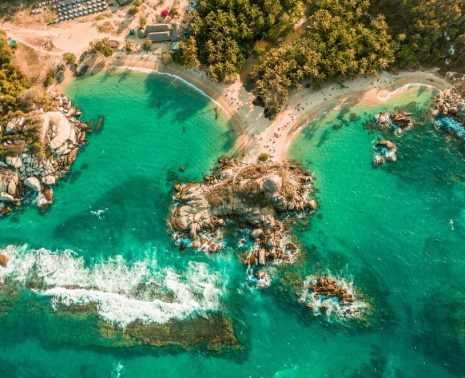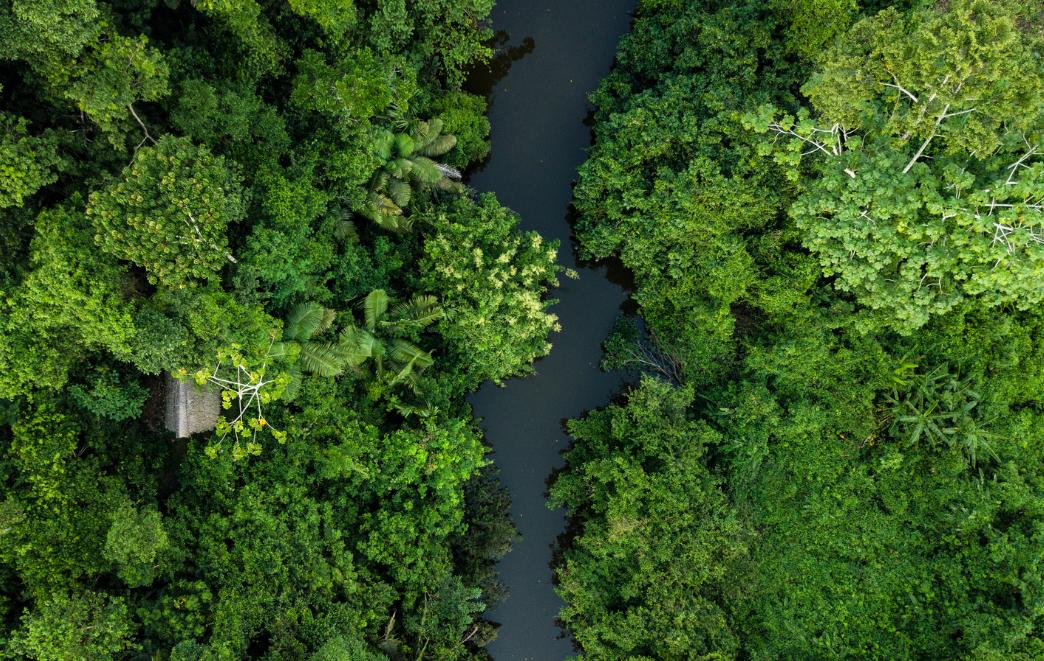
Now more than ever, sustainability is at the forefront of the discussion when it comes to luxury travel. Understanding your carbon impact before embarking on your luxury trip to South America helps protect the region and the planet. South America is home to some of the world’s most biodiverse ecosystems and vulnerable communities, and a key component to being a more conscious traveler involves offsetting your carbon emissions, which ultimately helps to reduce the amount of greenhouse gasses in the atmosphere. This is essential for mitigating the effects of climate change.
At Kuoda, we’re strong proponents of sustainable travel. Kuoda has a longstanding commitment to sustainability and conservation and adheres to strict environmental standards. In 2022, Kuoda Travel received the Climate Positive Certification, joining Glasgow Declaration for climate-responsible tourism. Since its creation, sustainability has been part of the philosophy of Kuoda, which is convinced that tourism is an essential part of our social and cultural life and can play a relevant role in protecting and restoring nature.
Travel with peace of mind knowing that your travels are carbon neutral, by learning how to offset your carbon emissions on your South America tour. Contact Kuoda today to start planning your luxury tour to South America, as sustainably as possible.
Understanding your carbon emissions:
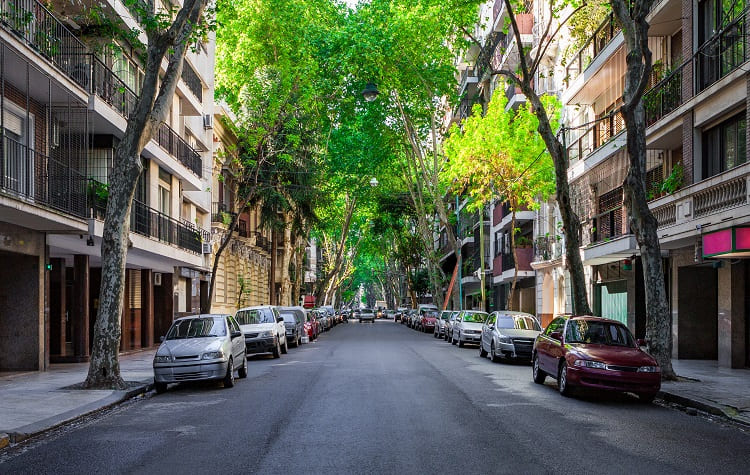
A normal day in the Recoleta neighborhood of the emblematic city of Buenos Aires.
Calculating your carbon emissions helps you make informed decisions about transportation choices, reduce your impact on the environment, and offset your emissions to mitigate your carbon footprint. Calculating your carbon emissions when you travel involves estimating the amount of greenhouse gasses produced by your transportation activities. To calculate these emissions, you can start by identifying the mode of transportation you used, such as a car, plane, train, or bus. Next, determine the distance traveled.
Once you have the distance, you can estimate the emissions per mile or kilometer for your mode of transportation based on factors such as fuel type and efficiency. You can find these emissions factors from sources such as the Environmental Protection Agency (EPA) or carbon calculators available online, like The Nature Conservancy, or EPA’s Carbon Footprint Calculator.
What is a carbon offset?

Dare to walk among trees on a suspension bridge in the heart of the Peruvian Amazon.
A carbon offset is a way to mitigate the carbon emissions generated by a particular activity, such as flying or driving a car. It involves purchasing carbon credits, which represent a reduction or removal of greenhouse gas emissions from an equivalent amount of emissions that would have otherwise occurred. For example, if a person takes a flight, they can purchase carbon credits that support a project that reduces greenhouse gas emissions, such as a wind farm or reforestation project. The purchase of these credits helps to offset the carbon emissions generated by the flight.
A carbon offset is a way to mitigate the carbon emissions generated by a particular activity, such as flying or driving a car. It involves purchasing carbon credits, which represent a reduction or removal of greenhouse gas emissions from an equivalent amount of emissions that would have otherwise occurred. To offset your flight, for example, travelers can purchase carbon credits that support a project that reduces greenhouse gas emissions, such as a wind farm or reforestation project. The purchase of these credits helps to offset the carbon emissions generated by the flight.
Carbon offsets are often used by companies and individuals as a way to reduce their carbon footprint and contribute to global efforts to combat climate change. However, it’s important to note that carbon offsets should not be seen as a substitute for reducing emissions directly. Instead, they should be used as a complementary strategy to help reduce the overall impact of carbon emissions
Flying with airlines that offset carbon emissions
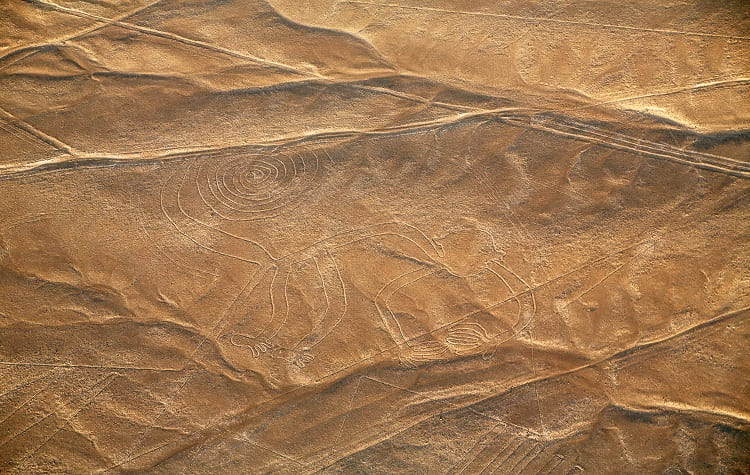
Flying over the Nazca Lines in a private helicopter while visiting southern Peru.
Carbon offset flights are a type of program certain airlines offer to help reduce the carbon footprint of air travel. When you book a carbon offset flight, you pay an additional fee that goes towards funding projects that reduce or offset the carbon emissions generated by your flight, such as renewable energy, energy efficiency, or reforestation projects.
The amount you pay for a carbon offset flight depends on the distance of your flight and the carbon offset program offered by the airline, but they are generally low-cost additions to the flight price. Airlines such as United, Delta, and Air Canada offer this option.
Purchasing carbon offsets
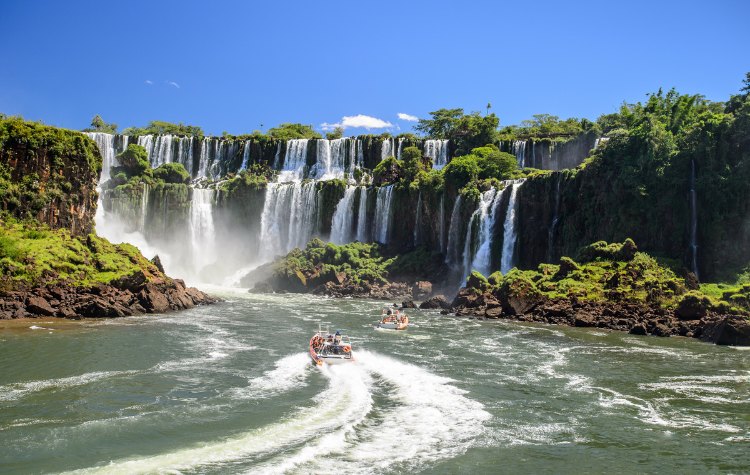
Boat ride through the Iguazu Falls to see the Argentinan and Brazilian side.
- Calculate your carbon footprint: Before purchasing a carbon offset, you need to know how much carbon emissions you are looking to offset. You can use a carbon calculator tool to estimate your carbon footprint based on factors such as your travel habits, energy consumption, and lifestyle choices.
- Choose a carbon offset provider: There are many organizations that offer carbon offsetting services. Learn more about which organizations offset carbon emissions.
- Select a project to support: Once you’ve chosen a provider, you can select a carbon offsetting project to support. These can include renewable energy projects, reforestation efforts, and sustainable agriculture initiatives. Look for projects that have been verified by reputable certification schemes such as the Gold Standard or Verified Carbon Standard.
- Purchase carbon credits: After selecting a project, you can purchase carbon credits based on the amount of carbon emissions you want to offset. Prices for carbon credits vary depending on the project and provider, so be sure to compare prices and read the fine print before making a purchase.
- Track and verify your offset: Many providers offer tools to help you track and verify your carbon offset. This can include a certificate of offset, which you can use to demonstrate your commitment to reducing your carbon footprint.
Reducing your emissions altogether to avoid having to offset them.
Sustainability hack: Reducing your carbon emissions directly is almost always more effective than purchasing a carbon offset, as it directly reduces the amount of greenhouse gas emissions being released into the atmosphere. Carbon offsets are a useful tool for mitigating emissions that are difficult or impossible to avoid, like air travel. However, it’s important to keep in mind that carbon offsets should not be seen as a substitute for direct emissions reductions. The most effective approach to addressing climate change involves reducing your own carbon emissions as much as possible by staying at eco-friendly hotels, traveling with sustainable tour operators like Kuoda, and supporting credible carbon offsetting projects as a complementary strategy.
Traveling in luxury doesn’t mean traveling without care and purpose. Sustainability conscious travelers can rest assured when they travel with Kuoda that we do everything in our capabilities to ensure your trip is as sustainable as possible from start to finish, then, it’s up to you to best decide how to make an impact, whether it’s reducing and, or offsetting your carbon emissions. Contact us today to learn more about how to plan a sustainable luxury trip to South America, and let us take care of the rest.
9 Wildlife Conservation Programs For Your Travel To The Amazon Rainforest
The Amazon Rainforest, often referred to as the "Lungs of the Earth," is a vast and ecologically critical expa...
Read PostThe Most Sustainable Destinations in South America To Visit in 2024
Sustainable travel to South America is critical in ensuring the destination, its biodiversity and rich culture...
Read PostCruising Sustainably: Eco-Friendly Cruises in South America
Imagine cruising through the Amazon Rainforest and going piranha fishing or sailing through the majestic icy f...
Read Post

 Call
Call 








